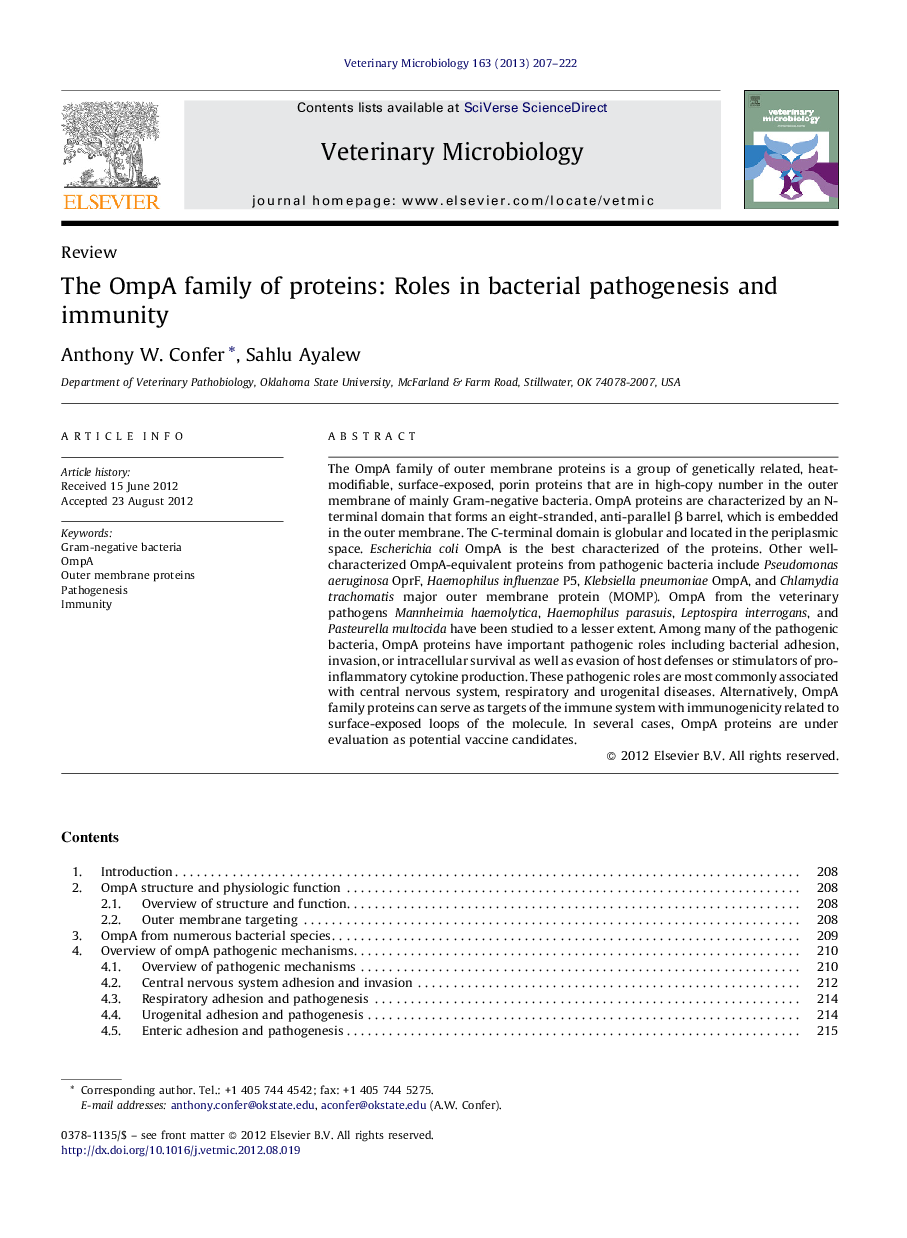| Article ID | Journal | Published Year | Pages | File Type |
|---|---|---|---|---|
| 2466859 | Veterinary Microbiology | 2013 | 16 Pages |
The OmpA family of outer membrane proteins is a group of genetically related, heat-modifiable, surface-exposed, porin proteins that are in high-copy number in the outer membrane of mainly Gram-negative bacteria. OmpA proteins are characterized by an N-terminal domain that forms an eight-stranded, anti-parallel β barrel, which is embedded in the outer membrane. The C-terminal domain is globular and located in the periplasmic space. Escherichia coli OmpA is the best characterized of the proteins. Other well-characterized OmpA-equivalent proteins from pathogenic bacteria include Pseudomonas aeruginosa OprF, Haemophilus influenzae P5, Klebsiella pneumoniae OmpA, and Chlamydia trachomatis major outer membrane protein (MOMP). OmpA from the veterinary pathogens Mannheimia haemolytica, Haemophilus parasuis, Leptospira interrogans, and Pasteurella multocida have been studied to a lesser extent. Among many of the pathogenic bacteria, OmpA proteins have important pathogenic roles including bacterial adhesion, invasion, or intracellular survival as well as evasion of host defenses or stimulators of pro-inflammatory cytokine production. These pathogenic roles are most commonly associated with central nervous system, respiratory and urogenital diseases. Alternatively, OmpA family proteins can serve as targets of the immune system with immunogenicity related to surface-exposed loops of the molecule. In several cases, OmpA proteins are under evaluation as potential vaccine candidates.
